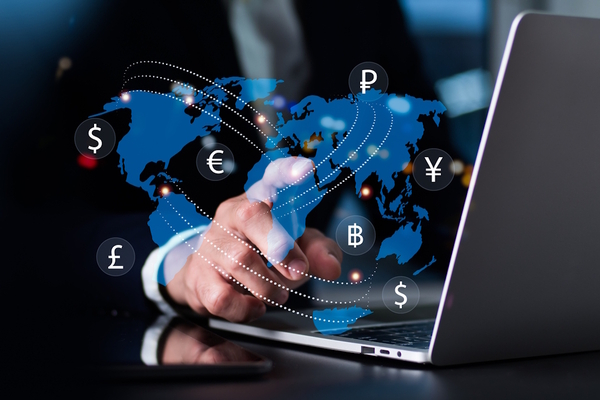Serving the underbanked through technology
Technology is helping banks serve underbanked people in the UK more effectively. Jeremy Swinfen Green explores the key barriers that have traditionally limited access to financial services and outlines some of the ways technology can help

Being unbanked or underbanked severely limits the options people have in life. It impacts the work people can do, the way they live and the opportunities they have for improving their circumstances.
The unbanked are individuals who do not have access to a bank account while the underbanked have limited access to financial services such as credit cards and loans. And they are surprisingly common in the UK. Around 1.1 million adults in the UK are unbanked. It is harder to measure the underbanked, but estimates of up to 10 per cent of the population – around 5 to 6 million people – are common.
Who are the underbanked?
Typically the underbanked are elderly, disabled or reliant on low and irregular incomes from poorly paid casual work, such as people on some zero hours contracts. The homeless and new migrants are particularly likely to be unbanked.
These are people who primarily use their bank accounts for basic transactions such as payments. Many lack access to affordable credit because they have poor, or non-existent, credit histories which means they are often denied loans or credit cards from mainstream banks. Others are forced to rely on cash because they cannot use online banking services due to a lack of access to computing or poor digital literacy. And yet more have no regular access to banking services because their local branches have closed.
Challenges faced by the underbanked
Access to affordable credit is a key problem for the unbanked and underbanked. They are often forced to use grey and black financial markets. Payday loans and check-cashing services are not just inconvenient to use, they can be extremely expensive, while using a loan shark – sometimes the only option people feel they have – can be dangerous as well as financially ruinous.
But poor credit options are not the only problem the underbanked face. Lack of access to financial services limits people’s ability to receive wages through direct deposits (something which may be a prerequisite of employment) or to make cashless payments. They often find it difficult to build financial resilience, as they lack access to products such as credit, savings accounts or insurance that can help them through unexpected events.
Financial exclusion can also make it harder for them to get discounts for paying utility bills online or shop online for bargains. Financial exclusion can even contribute to social exclusion, as many services now require digital payments.
For these reasons, life for the millions of people who are not served by traditional banking services can be difficult and limiting. That is why it is so important that technology is used to alleviate the problems of being underbanked. And there is much that technology can do.
Easier access
It isn’t always easy to open a bank account. People without traditional forms of identification, including migrants and the homeless, often struggle. Technology can help by improving identity verification, making it easier to validate a wider range of identification documents, such as foreign passports, asylum-seeker documents, database entries and biometric IDs.
Cost-effective services
Many people can benefit from the cost savings digital technology brings to banks. Technology enables them to offer low-cost accounts or even free basic services that appeal to underbanked populations who may not be able to afford high fees. The UK government already mandates the availability of basic bank accounts with no fees or minimum balances, targeting those with poor credit or low incomes. Banks have sometimes been reluctant to promote these services; however if they are less expensive to run then banks will have more of a reason to offer them to people who may be poor at present but who could turn into profitable and loyal customers in the future.
Technology also strengthens the business case for less profitable services such as microinsurance and small loans. AI can help reduce the administrative burden and cost associated with offering these services, making it possible to offer them profitably to underbanked customers.
AI can also facilitate faster, less expensive and more secure remittance services, which are crucial for underbanked migrant populations who may rely on money sent from abroad and who, once established, often want to send money to relatives outside the UK.
New digital services
Technology enables people to bank in new ways that may be more convenient to them. While digital services won’t be much help to people who cannot access the internet (the digitally disadvantaged), they can be of immense benefit to people who are confident with technology, as they can be a substitute for face-to-face banking. Most banks have online services that include secure mobile banking so that people without a local branch always have access to services to check balances, make payments and transfer money, even when they are out shopping or enjoying themselves.
Budgeting apps are another digital service that can help people who are unconfident with managing their finances, as many of the underbanked are. They can help people get their finances in order by tracking income, monitoring spending and identifying possible areas for cutting back, saving money, and proactively avoiding problems by reminding people when to pay bills or even paying them automatically.
AI-driven credit scoring
Without an adequate credit history, people are often denied credit. AI advances have led to more inclusive credit assessments where alternative data points such as utility payments, mobile phone usage, social media behaviours and digital footprints can be used to assess credit risk enabling banks to assess risk better and offer loans to a larger number of people.
In particular, the ability to use AI models to predict a person’s likelihood of repayment helps banks offer credit products to underbanked people who have lower risk profiles.
While this does have many advantages, concerns about data privacy remain. Striking a balance between inclusion and privacy is crucial as banks gather and analyse ever more personal information.
In addition, if AI models are badly constructed (because of biassed algorithms or poor training data) there is a danger that they will increase exclusion rather than reduce it. And this isn’t a simple problem to fix as it can result in noisy data, or simply an absence of data, rather than poor AI models.
Financial security
Technology can also help the underbanked become more financially secure. At its simplest, online education can be rolled out to large numbers of people to improve financial literacy, helping people to gain confidence in managing banking, and especially online banking where naivety can result in people becoming victims of fraudsters.
These education programmes can be supplemented by sophisticated and interactive learning where education is based on real-time circumstances – for instance, when a customer is on holiday, or when they appear to be the target of fraud.
Disadvantages solved by technology
Unbanked and underbanked people in the UK face significant disadvantages in managing their financial lives, from high costs to restricted access to essential services.
While banking technology does come with risks, such as privacy infringements, increased opportunities for fraud (although much banking fraud is telephone-based) and even predatory lending companies, if these are recognised by banks and regulators, then they can be mitigated by education, regulations and further technology.
By offering more inclusive products, improving financial literacy and regulating alternative lenders, banks and regulators can work together to reduce financial exclusion and make the financial system more accessible to everyone.

Jeremy Swinfen-Green
Most Viewed
Winston House, 3rd Floor, Units 306-309, 2-4 Dollis Park, London, N3 1HF
23-29 Hendon Lane, London, N3 1RT
020 8349 4363
© 2024, Lyonsdown Limited. Business Reporter® is a registered trademark of Lyonsdown Ltd. VAT registration number: 830519543





